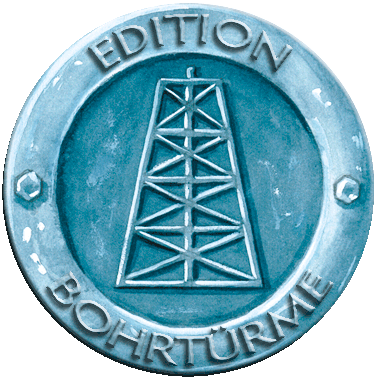
------------------------------------------
LUDOGRAPHIE BRIAN ROBSON
| Das Spiel | |||||||
Der Autor
|
|||||||
| Der Graphiker | |||||||
| Der Verlag | |||||||
| Edition Bohrtürme | |||||||
| Blog / News | |||||||
| Shop | |||||||
| Presse | |||||||
| Impressum | |||||||
 |
|||||||
I also didn’t want to enter a game about oil into the competition. I guessed that most of the competition submissions would have an oil theme and wanted to develop a game which told a slightly different story. Given that the derricks were one of the main components I thought that mining would work well. Namibia is a major exporter of minerals so it fitted the mining theme quite well. And as a bonus, the shape of Namibia, with its north-eastern promontory, makes for an interesting map. So I had the theme, the setting and the market mechanism; the next job was to try to put this together into a game which worked. I already had an outline game design for a game of railway development and resource collection in colonial South Africa. So I borrowed some of these ideas and worked them into the first version of Namibia. The most technically difficult aspect of the initial design process was putting together a map of Namibia made up of hexagons. My Paint Shop Pro and Microsoft Publisher skills were pushed to the limit and the resulting map was huge – four pages of A3. But it was useable and managed to survive the playtest sessions with mercifully few changes. Putting the rules together was much more challenging. As anyone who has ever attempted to put a ruleset together will tell you, it is more difficult than you can imagine to translate what appears to be a fairly simple concept in your head into a clear and unambiguous statement in a document. Thankfully, one of my gaming friends is a legislator at the Scottish Parliament and he is very good at pointing out ambiguities and inconsistencies.
For me, it is important to have a complete set of rules for the first playtest. They don’t have to be attractively laid out with images and examples, but it does help players understand what is expected from the game, and from their participation in the game. It also forces you, as the game author, to ensure that you have covered all eventualities and closed any loops within the game system before anyone else has the chance to pass comment. The first playtested version of the game was far too long and complex. Players scored reputation separately for each commodity making the administration of scoring and pricing difficult. The market was also a bit static and needed some changes to stimulate movements. In addition, the game was 12 turns long resulting in a playing time of somewhere between 4 and 5 hours! Not good. So it was back to the drawing board to simplify the game and shorten the playing time. The most memorable playtest comment was “there’s a game in there somewhere” ...
